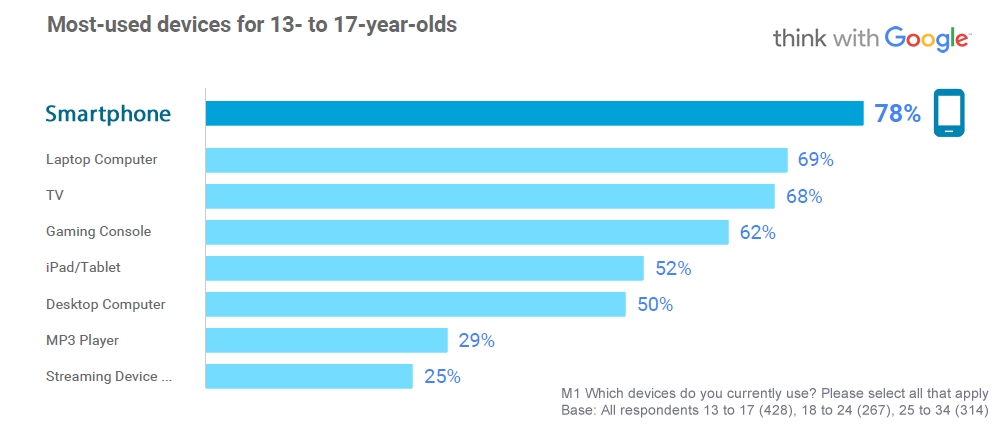Indicators
47% of Millennials Christmas Shoppers Are Influenced by Facebook for Gifting Inspiration, 2017 | NRF
Surprisingly, digital media channels such as Facebook (29%), email advertisements (24%), retailer apps (17%) and Pinterest (17%) played a smaller role in gifting inspiration for the Christmas shoppers, while 43% of shoppers are more taken by the TV. But these channels didn’t have the same effect on all demographics, 47% of Millennials were mostly influenced …
Indicators
Males in India Are More Likely to Play Online Games Than Females, 2017 | KPMG & Google
Young internet users in India have a higher propensity to play online games. Roughly 6 in 10 of Indian aged below 24 years and 22% of who aged between 25 & 30 years old are mobile gamers. Males are more likely to play online games than females. 83% of males in India are online gamers …
Indicators
68% of Australian Internet Users Access Social Media on Mobile Devices via Apps in 2017 | Sensis
Using apps to access social media is still the most common in Australia. 68% of Australian internet users access social media on mobile devices via apps, while 23% use both apps and websites. The females are more likely to use apps than males with a rate of 71% vs. 64%.
Indicators
Smartphone Is the Most Used Device Among American Teens, 2016 | Think With Google
Teens in US nowadays have more devices at their disposal than ever. The smartphone is the most used device among Americans aged 13- to 17-years-old. Laptop computer comes on the second level of preference with a rate of 69%, then gaming console, iPad and Tablet.
Indicators
US Males Are More Likely to Use Ad Blocker, May 2017 | GlobalWebIndex
Ad blocking seems to be a phenomenon as in December 2016 there were over 600 million devices running ad-block software globally. In the US, 58% of ad-blocker users are males compared to 42% of females who have used the ad-blocker in the last month. The majority of them are aged between 25-34 years old.
Indicators
Household Goods & Furniture Are the Most Expected Category Growth in 2017 | KPMG
Household goods and furniture are the most expected purchases category to grow in the future. Furniture/home décor is more likely to younger age groups, while household goods and appliances are more likely to Baby Boomers. This research was largely based on an online survey of 18,430 consumers living in more than 50 countries. The respondents were between the …
Indicators
Men Spend More Online Than Women, 2017 | KPMG
Men spent more online per transactions – $220 vs. $151 for women – on their most recent purchase. This can largely be attributed to the fact that the male consumers were more likely to buy items in higher priced categories such as luxury goods (55% of luxury transactions were by men) or electronics (72% of …






